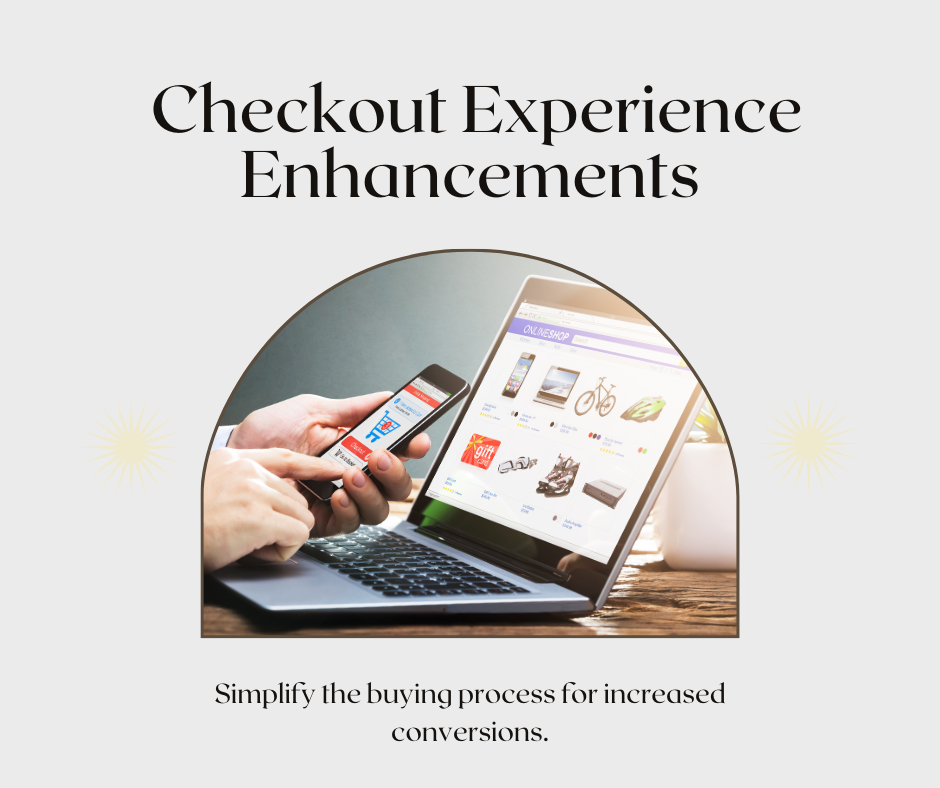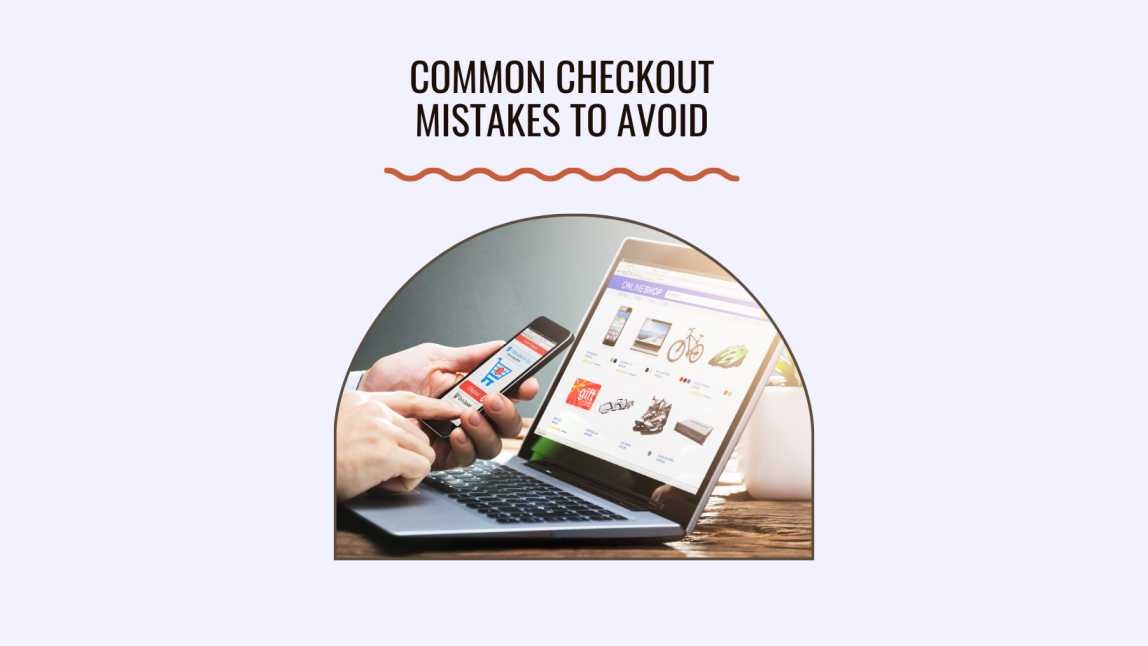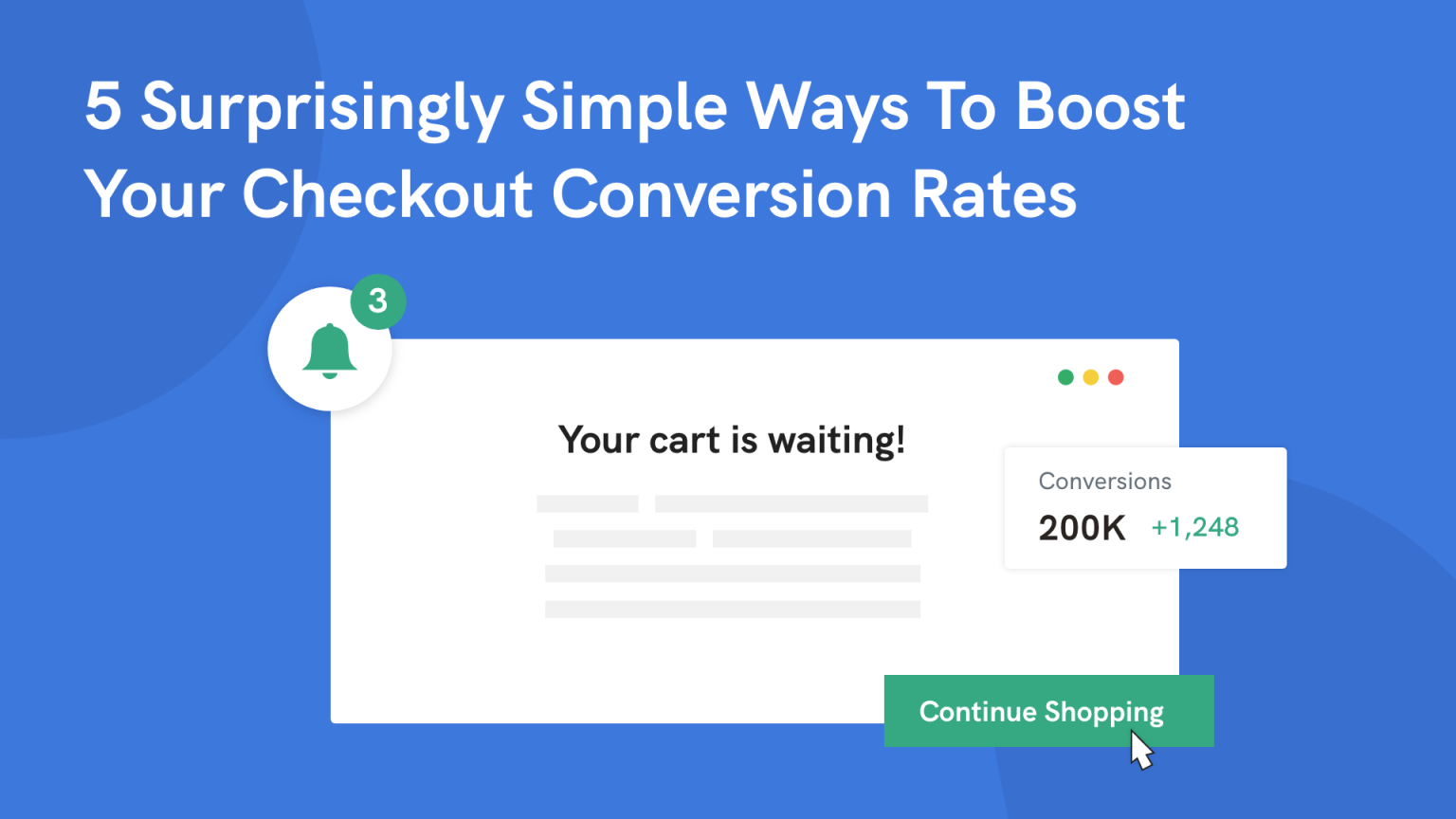Welcome to the heart of your e-commerce success—the checkout page. This is where browsing turns into buying, and a smooth experience is key for better conversion rates.
We’re going to enhance this crucial step, making it clear, fast, and reassuring.
It’s about making the checkout process so easy that customers can’t wait to complete their purchase and come back for more.
Ready to boost your sales? Let’s get started on making your checkout a joy for shoppers.
A great checkout experience isn’t just about closing a sale—it’s about starting a relationship.
I. Fundamental Checkout Optimization Techniques

A. Streamlined Design for Checkout Efficiency:
Streamline your checkout process by adopting a minimalist interface.
Eliminate unnecessary fields, keep only what’s essential, and use clean, straightforward layouts.
Ensure your call-to-action buttons stand out and are easy to click. The goal is a no-brainer navigation that leads straight to purchase.
Suggestion: Use a clean, column-based layout to guide the eye naturally from field to field.
B. Progress Indicators to Guide the Checkout Journey:
Incorporate a visual progress bar or step indicator at the top of your checkout page.
It should dynamically update as customers move through the process, giving them a sense of accomplishment and encouraging them to complete the purchase.
Suggestion: Employ subtle animations on the progress bar for a satisfying user experience.
C. Guest Checkout for Faster Conversions:
Implement a guest checkout feature to cater to customers in a hurry or those hesitant to create an account.
Position this option prominently on the first page of the checkout to reduce cart abandonment.
Suggestion: Make the guest checkout button more prominent than the sign-in/register option.
D. Diverse Payment Options for Checkout Flexibility:
Expand your payment options to include all major credit cards, e-wallets like PayPal and Apple Pay, and even cryptocurrency, if possible.
Ensure the payment gateway is robust and integrates seamlessly with your checkout.
Suggestion: Offer localized payment options that are preferred in your customers’ regions.
E. Robust Security Features to Secure the Checkout:
Enhance your checkout security with SSL certificates and PCI DSS compliance, and utilize services like 3D Secure for credit card transactions.
Display security badges clearly to reassure customers.
Suggestion: Use trusted security badge logos and place them near the payment information fields.
II. Checkout Experience Enhancements

A. Auto-Fill Functionality for Smoother Checkouts:
Leverage browser auto-fill by structuring your form fields with recognizable name attributes.
This allows customers’ browsers to populate information seamlessly, saving time and minimizing errors.
Suggestion: Regularly test different browsers and devices to ensure the auto-fill works flawlessly.
B. Error Notification:
Design your error notifications to be immediate and contextual.
Use inline validation that provides users with real-time feedback, ensuring mistakes can be corrected as they go rather than after form submission.
Suggestion: Customize error messages to be specific; instead of “Invalid entry,” say “Please enter a valid email address.”
C. Mobile-Optimized Checkout for On-the-Go Purchases:
Optimize for mobile by using responsive design principles.
Ensure text is legible without zooming, tap targets are large enough, and the checkout process is smooth on smaller screens.
Suggestion: Implement a one-thumb checkout experience where all elements are easily accessible with one hand.
Each of these user experience enhancements is about making the checkout process smoother and respecting the customer’s time and effort.
The smoother the path to purchase, the more likely customers are to follow it through to the end.
III. Post-Purchase Checkout Optimization

A. Clear Confirmation for Trusted Checkouts:
Ensure that once a purchase is made, customers receive a clear and detailed confirmation message.
This message should include a summary of their order, the expected delivery time, and a thank-you note. It’s vital to reinforce the customer’s decision to buy from your store.
Suggestion: Send a confirmation email in addition to displaying a confirmation page, and include a customer service contact for any follow-up questions.
B. Easy Access to Customer Support
Offer multiple ways for customers to reach out for support post-purchase.
This can include phone, email, live chat, and even social media.
The goal is to make customer support as accessible as possible to quickly resolve any issues that may arise.
Suggestion: Highlight your support options clearly on both the confirmation page and in the confirmation email, and consider a chatbot that can provide immediate answers to common questions.
IV. Advanced Checkout Optimization Strategies

A. Localization and Language Adaptations for Global Checkouts:
Adapt your checkout page to the local language and cultural nuances of your customer base.
This not only improves understanding but also builds trust.
Consider using IP geolocation to automatically select the language and currency.
Suggestion: Implement a drop-down menu so that users can manually select their preferred language and currency if the automatic detection is not accurate.
B. Real-Time Address Validation to Streamline Checkout
Incorporate real-time address validation technology into your checkout process.
This ensures that all shipping details are correct and reduces the risk of delivery issues, enhancing customer satisfaction and reducing operational costs.
Suggestion: Use a service that provides auto-complete suggestions as users type their addresses, improving accuracy and speed.
C. Flexible Delivery Options to Customize the Checkout Experience:
Offer various delivery options to cater to different needs, such as same-day delivery, next-day delivery, standard shipping, or in-store pickup.
Clearly communicate the costs and estimated delivery times for each option.
Suggestion: Provide a calendar interface where customers can select specific delivery dates that work best for them.
D. Social Proof and Testimonials to Boost Checkout Credibility:
Showcase customer reviews and testimonials directly on the checkout page.
Positive feedback from other customers can significantly influence buying decisions and reduce hesitation at this critical point.
Suggestion: Feature a rotating carousel of testimonials with specific benefits mentioned by customers.
E. Save Cart Options to Reduce Checkout Friction n:
Allow customers to save their cart for later, providing them with an email link to return directly to their saved cart.
This is particularly useful for customers who are not ready to purchase immediately and increases the likelihood of completing the sale later.
Suggestion: Send a reminder email after a day or two, offering assistance or a small discount to encourage completion of the purchase.
F. Transparent Pricing for Honest Checkouts:
Display a detailed breakdown of all transaction costs, including item prices, shipping fees, taxes, and any other charges.
Transparency at this stage can prevent last-minute cart abandonment due to unexpected costs.
Suggestion: Include a dynamic calculator during the checkout process that updates the total price as options are added or changed.
V. Common Checkout Mistakes to Avoid

A. Over-Complication:
Keep the checkout process simple and straightforward.
Avoid cluttering the page with unnecessary options or information that can distract or confuse customers.
Suggestion: Review and simplify your checkout steps regularly. Consider removing any non-essential fields or steps that could deter completion.
B. Mandatory Account Creation:
Forcing customers to create an account can be a significant barrier to checkout.
Many customers prefer a quick, anonymous purchase without the need to sign up and remember login details.
Suggestion: Always offer a guest checkout option. Highlight the benefits of account creation post-purchase, such as tracking the order, easier returns, or future discounts, to encourage account creation.
C. Hidden Costs:
Unexpected costs revealed late in the checkout process are one of the top reasons for abandonment.
Customers feel frustrated when they encounter last-minute fees that weren’t clearly disclosed upfront.
Suggestion: Ensure all costs, including shipping and taxes, are transparent from the outset. Consider incorporating a cost calculator that updates in real-time as customers make selections.
Check it: Free Conversion Rate Calculator by Wisernotify
D. Lack of Transparency
Transparency builds trust. Be clear about all aspects of a transaction, including detailed product descriptions, warranty information, and return policies.
Suggestion: Provide easy access to detailed product information and support, and ensure your return policy is clear and easily accessible throughout the shopping experience.
E. Unclear Return Policy:
A complicated or unclear return policy can deter customers from making a purchase.
They need reassurance that they can return items if needed without hassle.
Suggestion: Simplify your return policy and communicate it clearly at various points in the shopping process, especially during checkout.
F. Technical Issues:
Technical glitches during checkout can immediately turn a positive shopping experience into a frustrating one.
These issues range from slow loading times to transaction errors.
Suggestion: Conduct regular audits and testing of your website to identify and fix bugs quickly. Ensure your hosting can handle high-traffic loads efficiently.
G. Lack of testing:
Not regularly testing and updating the checkout process can lead to outdated practices that harm conversion rates.
Suggestion: Implement A/B testing to try out different versions of your checkout process and determine which elements most effectively encourage completions. Use customer feedback to guide your optimizations.
Conclusion
Optimizing your checkout process is a continuous journey aimed at enhancing customer satisfaction and boosting conversion rates.
Emphasize simplicity, transparency, and customer feedback to refine your strategies and keep your checkout modern and effective.
Encourage ongoing testing and updates to adapt to new technologies and evolving customer expectations.
By prioritizing a customer-centric checkout experience, you not only increase conversions but also foster loyalty and trust.
With commitment and regular improvements, your checkout can become a model of efficiency that converts shoppers into loyal customers and champions of your brand.

